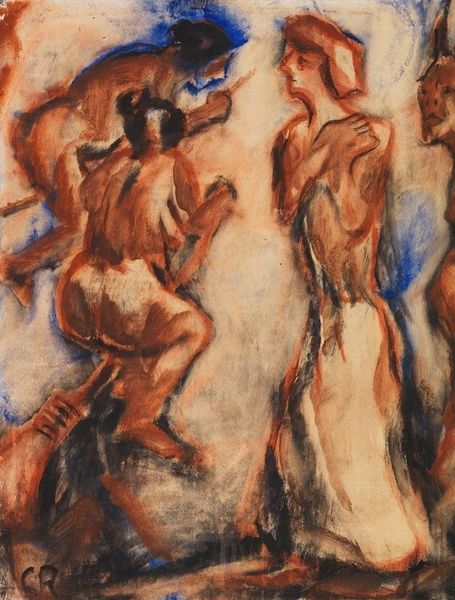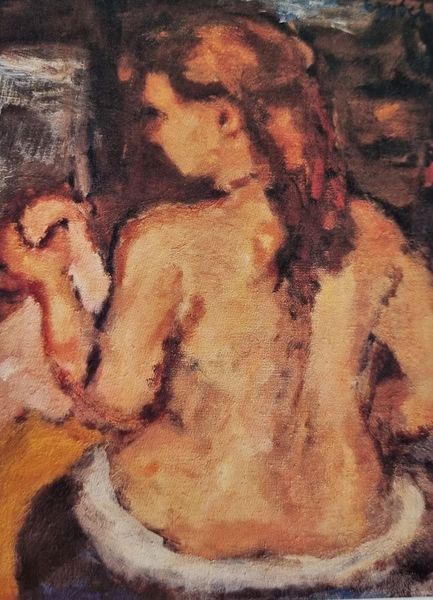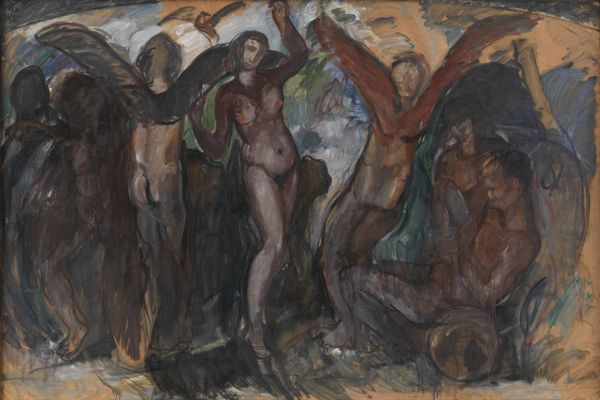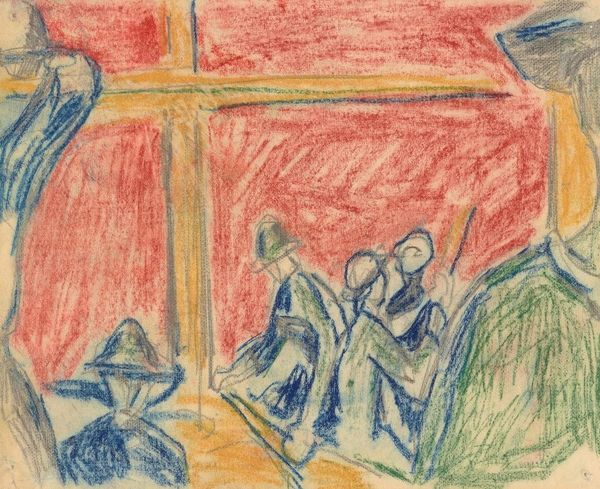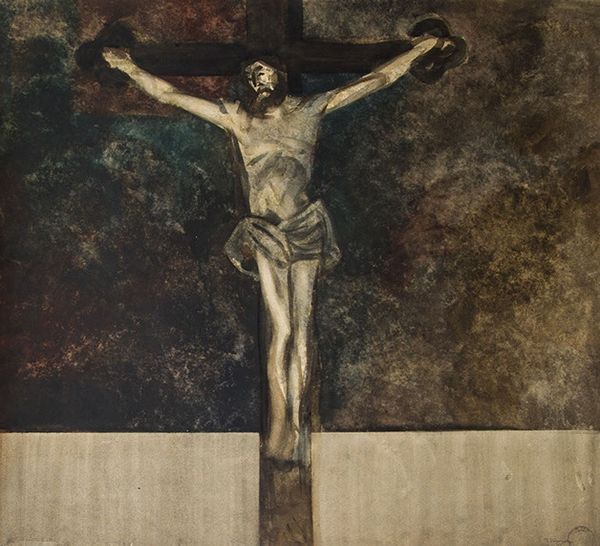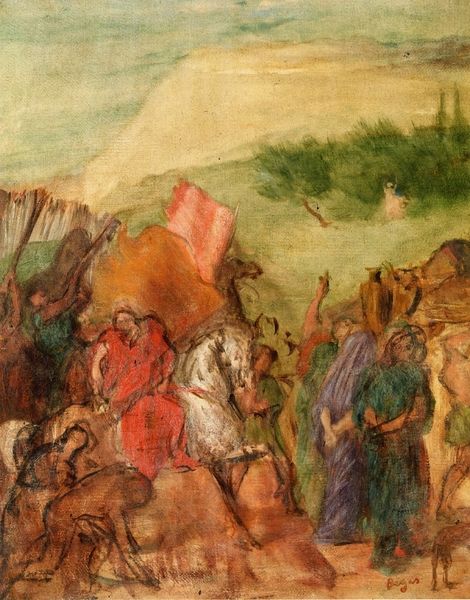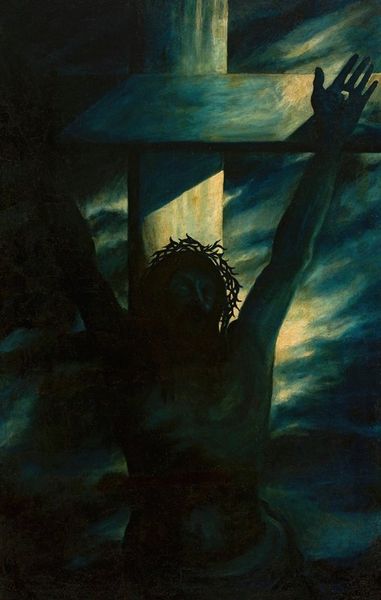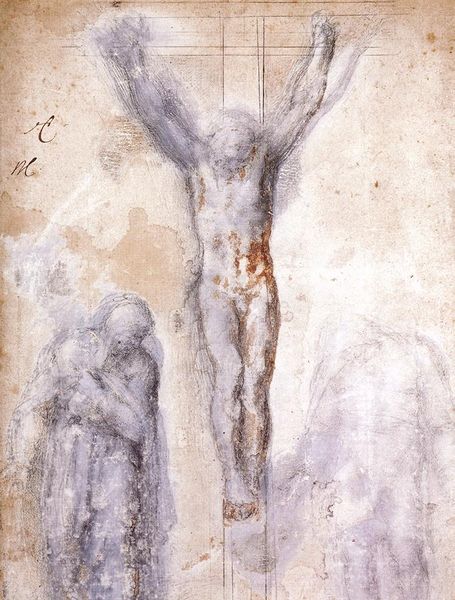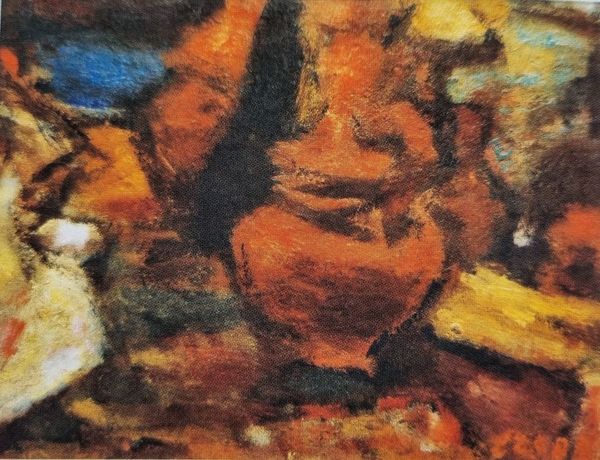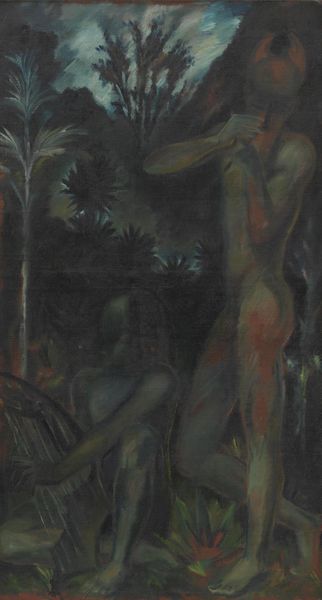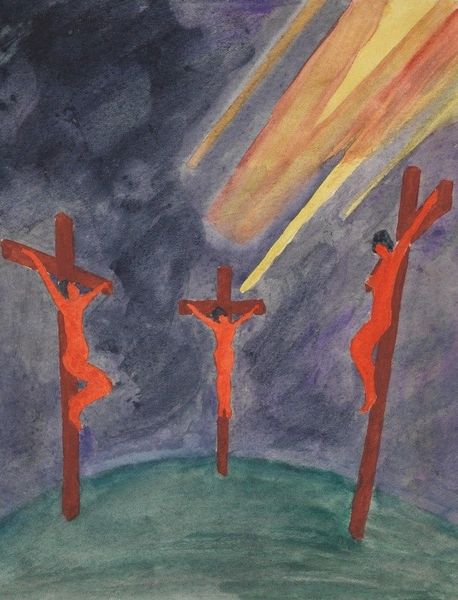
painting, oil-paint, impasto
#
narrative-art
#
painting
#
oil-paint
#
figuration
#
oil painting
#
impasto
#
expressionism
#
history-painting
Copyright: Public domain US
Curator: This is Béla Czóbel's "Golgota," painted in 1919. The medium is oil on canvas. It's an arresting interpretation of a timeless scene. What's your initial reaction? Editor: Overwhelmingly somber. The thick impasto lends a textural, almost sculptural quality, intensifying the drama. The blues and browns are heavy, weighed down. Curator: Indeed, the somber colors work powerfully, aligning with traditional symbolic connotations of death and mourning, and the scene being portrayed, reinforcing feelings associated with the Passion of Christ. Editor: The application of paint itself strikes me. The artist uses dynamic, expressive brushstrokes. It's less about realistic depiction, more about conveying emotional intensity through form and color, an example of the expressionist style. The cross dominates the picture. Curator: The rough texture echoes the agony depicted, extending back centuries of iconic representation of such moments, in order to perpetuate its inherent cultural values and beliefs about life, death, sacrifice, and spirituality. Editor: The figuration feels almost… dissolved. As though the forms are breaking down under the weight of the subject matter, and this echoes an art-historical dissolution of realism from the same era, Curator: Interestingly, Czóbel seems to lean heavily into archetypes—the weeping women, the stark figure on the cross. There's something timeless, almost universal, in the emotional vocabulary here, transcending a specific time. Editor: It makes one think about the artist's perspective as well, his engagement in this specific cultural memory. A perspective mediated through art. Curator: Precisely. It asks us to consider how shared narratives persist, morph, and speak to us across eras, in different ways, in Czobel's brushwork. Editor: Well, for me, the effectiveness of "Golgota" hinges on that potent interplay between form and emotion, where brushstroke and color amplify the tragic narrative, echoing its ongoing impact through expressive composition and skillful representation. Curator: I appreciate that you focus on his ability to use form and color to perpetuate feeling, in tandem with how the artwork calls on viewers to participate in a long visual tradition in relation to loss and mourning.
Comments
No comments
Be the first to comment and join the conversation on the ultimate creative platform.
